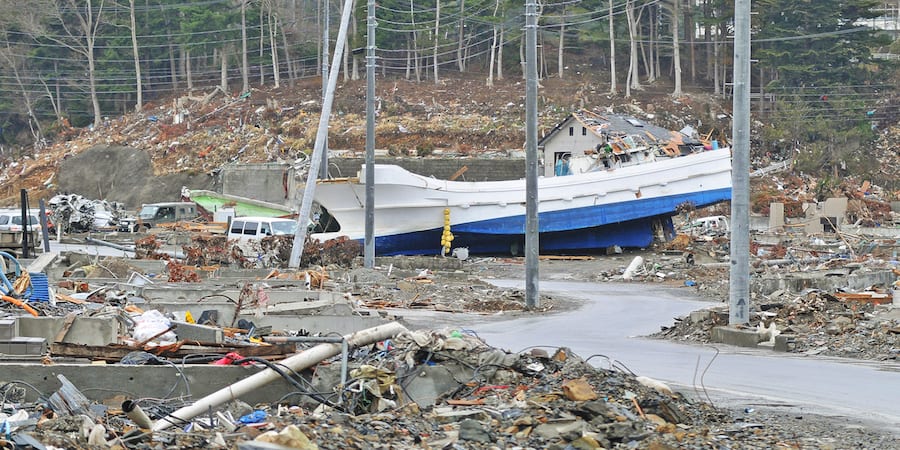
What is the role of a sensei in a lean organization?
RESEARCH - For most CEOs, working with a sensei is common practice. Yet, many questions remain on this role. This paper aims to bring clarity to the "sensei mystery".
Words: Michael Ballé, Institut Lean France & Dan Jones, Lean Enteprise Academy/Lean Global Network
We coined the “lean” concept more than 20 years ago to describe Toyota’s unique manufacturing approach and then attempted to capture the essence of “lean thinking” in several subsequent research books and articles. A recurring question we so often encountered along the way was on the role of the sensei, a Japanese word that means teacher, but also references to the Confucian notion of master.
Having now witnessed hundreds of lean initiatives in a wide range of industries, it seems that Pat Lancaster’s (one of the very first CEOs to adopt lean as his main business strategy) original formula for a successful lean transformation remains accurate: “Start from the top, find a sensei you can work with, involve everybody on the shop floor.”
As the lean movement reaches maturity, the sensei mystery remains equally puzzling and vexing. Vexing, because if indeed one needs a sensei to successfully adopt lean, senseis then become an unavoidable bottleneck to the diffusion of the approach. Puzzling, because although every successful lean transformation we know of (not just most, but every) involves a sensei, these individuals are extremely different in background, personality, attitude and even differ (and indeed bicker) on their interpretations of lean principles in situ. The one common element they share is having been trained by a sensei themselves, and having learned lean within a Toyota Production System tradition that harks back to one of its key founders, Taiichi Ohno.
After two decades of experimenting and observing companies adopt lean, we now believe that the approach is unique in that it is a learning-based path to competitive advantage. Indeed, as John Shook pointed out about Toyota, “the most important accomplishment of the company is simply that it has learned to learn.” As a competitive model, lean differs from all others in that competitiveness stems from:
- Learning curves: each unit and project’s learning curve is carefully nurtured by its “parent” in the organization, rather than having to comply with a set of best practices codified by corporate.
- Spillover: effective learning practices are transmitted through hands-on learning within the organization, from person to person and experientially based, rather than through imposed processes.
- Value-driven: lean, as a whole, provides a learning framework oriented towards aligning customer satisfaction (and company success) with employee satisfaction (and personal fulfillment) through a number of principles and tools aimed at discovering how to better generate value and eliminate waste in every specific context.
Both the power and weakness of the approach rests in the individual learning path of each manager. In the lean system, every manager is expected to figure out:
- What they have to learn: what is their personal challenge to better align their people’s work with customer value, and in so aligning sustainable, profitable growth with employee satisfaction.
- Learning from work-level employee learning: the learning style is deeply embedded in daily operations – the manager’s learning stems from his or her support for team-level learning activities. As the work teams solve their problems or show initiatives, the manager is expected to interpret their conclusions in the wider context of the business, as well as support further learning activities in the workplace. In other terms, they learn, you learn – lean’s learning approach is very clearly learning-by-doing, and doing within the work flow with the people who actually do the work.
- Create a learning environment for their employees: learning on the job is never easy particularly with the pressures of today’s business environments. Consequently, one of the key roles of a manager in the lean perspective is to create a visual environment for employees where abnormal is easily distinguishable from normal and where opportunities for small-step continuous improvement (kaizen in the lean jargon) are clearly visible to all. A learning environment also means a stable affective environment where mistakes are not punished but seen as sources of learning, and where employees feel they can thrive without fearing arbitrary, sudden changes.
For many managers, these three core lean practices are rather challenging and although it is their immediate boss’ responsibility to create the environment for them to succeed at it, not surprisingly, they can also be supported by the lessons taught by an experienced teacher: the sensei.
The sensei is not a boss in any sense. He or she has no power and can only suggest, never tell. The sensei’s job is to help the manager develop his or her own lean thinking through practical hands-on exercises on the shop floor. In many cases, managers feel they are too busy just treading water to indulge in learning exercises, particularly when those involve real-life teams and situations. It’s the sensei’s job to convince the manager that one needs to put out fires, certainly, but if all one does is putting out fires there will only be more fires to put out. By learning to practice kaizen, managers improve their area’s technical skills and cooperation skills and so develop better performing processes. In learning terms, any manager’s superior has to model the lean behavior and attitudes expected, but the sensei is there to support the person’s learning curve in a way the superior rarely can.
The essence of lean is learning by problem solving. This is a tall order in the best of cases, and indeed each manager has to be taught to learn to learn. With respect to developing a specific manager, the sensei has five main roles in supporting: i) problem finding, ii) problem facing, iii) problem framing, iv) problem solving and v) learning.
“No problem is the worst problem,” is a classic lean tenet. Probably the most important part of lean’s learning by problem solving approach is the very upstream phase of problem finding. Problem finding is about discovering problems that have not hitherto been formulated - mostly due to unspoken assumptions, and sometimes taboo topics. Lean’s approach to business is to benefit society by:
- Developing better products, which means following customer preferences and delivering these through frugal, waste-minimum processes (which is also the key to sustainable profitability)
- By developing better people: creating an atmosphere of mutual trust in which every person has the self-confidence and confidence in others to hone their skills and embrace their technical challenges in order to develop both their expertise and their ability to collaborate with others.
The sensei has a critical role in helping the manager to look up from immediate concerns and ask deep questions about where customers are going and how technology is evolving (and how ready are our people to embrace new technology). This exploration is critical to business success and often has far ranging implications for the business unit (and the company beyond that), and in this the sensei acts far more as a sounding board that an actual “teacher” – which would assume the sensei knows the answers, clearly not the case in this exploration. The sensei’s role is to keep the manager exploring and not drown in day-to-day issues.
As one sensei phrased it, business success is about taking care both of today and tomorrow: if you only take care of today, there will be no tomorrow, but if you ignore today and only look at tomorrow, you won’t have a tomorrow either.
Problem facing is the second essential role of the sensei. Human beings are natural problem solvers: who can resist a good crossword puzzle? But human beings are also naturally rather poor problem finders – who in his right mind would enjoy devising crossword puzzles? We like to solve problems we know how to solve but hate having to solve problems we don’t know how to solve. Any one’s natural inclination is to shy away from too difficult a challenge, particularly when there is plenty of other stuff to do where one excels. It’s the sensei’s job to support the manager to solve the problems they don’t feel like facing. For instance, typically, one plant manager got to be plant manager by being very good at command-and-control. On the one hand the plant runs well as it’s tightly controlled, but on the other it’s performance doesn’t (can’t) improve further. It’s the sensei’s job to teach this manager to learn to work with operators and not just with his middle-manager and support creativity and initiative, quite at the opposite of what he’s always done. Or, conversely in another common case, another plant manager got his job because he’s very good at creating a good working environment and energizing teams. Yet, at some point, a more rigorous way of working is needed to enhance performance further, and it will be the sensei’s job to convince this plant manager to see the factory as a system and to implement the pull system mechanics that can link every team together through kanban cards and small trains.
In both cases, the sensei has to support the manager in facing problems in an area where they feel weak and vulnerable. Teaching a CEO to face customer complaints as a sign of evolving customer demand. Teaching a non-profit organization leader to hear they’re overburdening their staff with projects and so the routine work for members doesn’t get done and so on. As time goes by, managers working with an experienced sensei learn to be less uncomfortable with their uncertainty zones and, occasionally, even to enjoy the sense of discovery.
But this essential aspect of lean thinking can never be taken for granted and is a core job of the sensei’s to help managers to face challenges with courage and creativity.
As Robert King Merton once taught us, any definition of the situation influences its resolution: problem framing is an essential part of problem solving. “Framing” is about defining what are the salient features of a situation (what is important and what is not) and what are the success conditions for its resolution (what is an acceptable solution and what is not). The lean approach has a very specific way of framing issues:
- Are customers more satisfied in terms of quality, cost and delivery, or less?
- Are employees more satisfied in terms of safety and morale, or less?
- Are we closer to 100% just-in-time or less?
- Are we closer to 100% built-in-quality or less?
- Are employees more involved (and engaged) in maintaining standards through kaizen or less?
There is little debate about these core principles in the lean field as they are as relevant (and difficult) now as when they were formulated 60 years ago but the enduring difficulty is how to apply them in any specific situation.
Lean is exclusively about learning-by-doing. Stating the principle is not enough. In order to learn by doing, one has to express the principle (or, more accurately, usually the interplay of principles: it’s a system) in a very concrete, hands-on visual way at the workplace. This is essentially what Taiichi Ohno originally did when he brought the lofty ideals of jidoka and just-in-time to life through the kanban system: a lowly cardboard card that would go on to turn industrial thinking on its head.
The sensei’s role is not to pontificate about the principles, but to help the manager find, in every situation, a visual way of expressing the principles through a practical system where both employees and managers can see together, discuss together and so act together. For instance, consider the ‘stop at defect’ andon system we see in Toyota plants, where team members pull on a cord every time they face a difficulty and their team leader comes running (if the problem can’t be solved under a minute, the line stops), apply in a company that builds complex high-tech machines at the average rhythm of once a month. In such project mode, the andon system seems a little silly. In this case, the sensei can ask each project manager to draw out a “no go” list to be posted on each machine that would stop the project from moving from one phase to the next if one item remained in doubt. This simple checklist might seem crude, but it fits the interaction between just-in-time (move to the next phase) and jidoka (stop and fix the problem) and, it turns out, it is very difficult to establish and follow. In suggesting this “no go” list, the sensei has framed the complex lean principles of jidoka and JIT in a concrete, visual manner where you can distinguish at a glance whether the situation is OK or not OK.
In this respect, senseis need to fully master the mechanics of a “pull system” in its various forms, whether in high volume manufacturing, low volume high mix, engineering projects or healthcare. Pull is a technique specific to lean that creates the conditions for learning by “lowering the water in the lake (inventory or work ahead of time) to make the rocks appear (problems for learning).”
Without pull, there is no true lean. Few managers have the time or the inclination to learn the ins-and-outs of a pull system, so that is one discipline the sensei actually teaches. Problem finding and problem facing require the sensei’s experience, but problem framing is where the sensei’s unique expertise lies. The question of the ecological validity of the Toyota Production System is a very lean one: why would Japanese automotive production techniques apply to other settings? Experience has shown repeatedly that indeed lean offers the same promise in fields as varied as healthcare, distribution or software development but that the various techniques require specific interpretation in every case. The sensei’s specific task is to know as much as possible how to interpret principles and tools in different settings and be au fait with the lean tradition of what works and what doesn’t. In situation, the sensei will help framing the problem by suggesting the appropriate visual tool that will make the problem apparent to all those involved with the process so that they can work at finding local countermeasures.
After problem finding, problem facing and problem framing, the teams get involved in actually solving the problem.
This is what people do most naturally, with the proviso that they generally look for working around the problem rather than actually solving it deeply – anything that works so you can move on to a different issue. At this point, the sensei has yet another critical role: he or she has to keep the focus on the fact that the aim of problem solving in lean is indeed learning and not simply getting rid of the issue. In other words, the sensei has to keep the problem solving process true to the values of lean of first solving the problem at the workplace (as opposed to in a meeting room), secondly by rigorous small step experimentation (as opposed to an “ultra-solution” that gets rid of the problem without solving it), in respecting people’s experience (as opposed to imposing the leader’s pet solution) and developing their knowledge by rigorously confirming each hypothesis (learning what doesn’t work count as much as learning as finding out what does work) and in the spirit of teamwork and taking into accont other stakeholders (as opposed to every one solving the problem on their own and imposing the solution of the person with the greatest political clout).
Lean has a formal method for solving problems based on the Plan-Do-Check-Act cycle, popularized by W. Edwards Deming. The sensei’s role is to try and convince the manager to adhere to the four steps whilst making sure employees have space to think (Plan), space to experiment (Do), space to convince others that their countermeasure does the job (Check) and space to change the procedures of the company (Act).
Finally, someone has solved the problem or, more likely, found an appropriate countermeasure (no “solution” is ever perfect or permanent as there is always room for further kaizen). The final question is: has learning really occurred?
First of all, learning requires that the people involved change their behavior and, secondly, that they have the insight to understand how this change of behavior actually contributes to greater performance. A change of procedure first requires agreement among stakeholders that the new proposed procedure is the one they all now think they should follow. From then on, this new way of working needs to be implemented and taught to others, which can never be taken for granted as the odds are that this new way of working will run afoul of old ways of working and the status quo needs to be challenged. The sensei is often instrumental to keeping the manager’s attention on this last part of the learning process so that the correct conditions are created for the new behavior to flourish – this, in turn, often demands adjusting or abandoning other beliefs or behaviors, which is never simple.
Furthermore, the new, learned, behavior will not stick if the people involved don’t understand how this contributes to better performance – if indeed it does. The sensei’s last task is to conduct the self-reflexive element of evaluating and discussing the new behavior until all involved adopt this new idea as a fact of their working world view and not simply as “an interesting experiment we once did but never followed through.” Here, the loop closes on problem finding as the deeper questions of whether this was the right problem to solve, whether it was solved the right way (sometimes, the countermeasure can deliver what it promised, but fail at solving the original problem) and what next problems should be considered to continue the learning journey.
The default mode of most managers is contract management (get through the worries of the day), command-and-control (make all the decisions and make sure they’re properly executed) and put out the fires the two previous attitudes invariably create.
This works insofar as it keeps things running but at the cost of forgoing superior performance. Lean is a revolutionary approach to greater performance that focuses on creating the conditions for day-to-day learning rather than on being right all the time. Oddly, the sensei are not there to help managers solve problems faster, but quite the contrary, they are there to question, to open minds, to encourage exploration. Which is also why lean is not for everybody – the approach is very fulfilling for people with a curious mind, who are intrigued by new possibilities but also have the business gumption to make things happen at the workplace. To managers who need to be right all the time, lean brings nothing but heartache. To others who are at ease with on-paper solutions others will execute, lean demands an intolerable level of getting your hands dirty, or in lean tradition “look with your feet and think with your hands.”
To curious, pragmatic and open minded leaders, working with a sensei is obvious as the constant questioning and practical handle on the lean tradition helps them achieve the kind of explorations they seek for their business. On the other hand, leaders who don’t know how to work with a sensei will probably face great difficulties in adopting lean thinking beyond adapting a few lean tools to their immediate needs. A healthy level of doubt and self-reflectiveness is par for the course.
In the end, does the sensei actually “teach” or “coach” the manager? Well, yes and no.
There definitely are teaching elements in the sensei’s role, particularly at the problem framing stage, such as repeating the deep principles in situation and teaching the many ways of visualizing the problem at the workplace from a technique from the large lean tradition of visual management. But beyond this central – and very important – role of the sensei, most of what he or she does is far more collaborative than the action-oriented terms “teaching” or “coaching” seem to imply. The sensei collaborates intensely with the leader to turn problems into learning moments by embodying the values, principles and techniques of lean. Contrarily to archetypical images the sensei is neither a guru nor a mystical master, but as literally translated from the Japanese, “a person born before”, someone with the experience and the grey hair required to support leaders in their drive to find leaner solutions to their work challenges and how to involve and engage their employees in this voyage of discovery. So what is the role of a sensei? It is to make sure that leader’s and employee’s learning curves develop hand in hand: they learn, you learn.
THE AUTHORS

Read more


FEATURE – Much has been said and written about Toyota’s ability to recover from disasters. What many don’t realize, however, is that the company’s recovery strategy is informed by its underlying values – not just its tools.


FEATURE – This piece analyzes the different elements of scrum, an agile software development framework, as seen from the point of view of traditional lean thinking.


FEATURE – Ahead of the annual lean conference of LEI Polska, the authors reflect on a recent survey they ran with their clients on the key business challenges they face.


INTERVIEW - Like many other improvement methodologies, LeanUX shares a lot of principles with traditional lean. Yet, the two communities don’t know a lot about each other. We ask an expert to bridge the gap.

